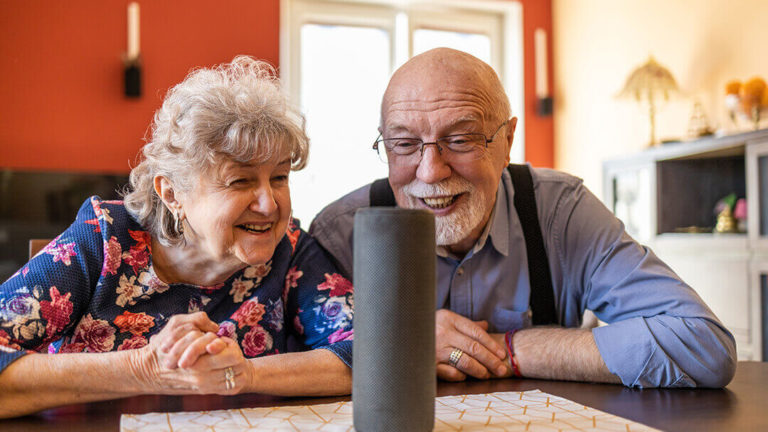In 2021, assisted living residents in Orange, CA, found companionship in an unexpected place: robotic pets. Thanks to a program launched by the Council on Aging – Southern California, 200 robotic cats and dogs were distributed to residents in assisted living communities, focusing on those in memory care units. Created by a team originally under Hasbro called Joy for All, these motion-sensitive and responsive robotic pets create a similar feel to their living counterparts. And they’re actually pretty convincing — some of the older adults with severe memory issues believed the robots were real.
But this wasn’t the first time that robotic pets had proven to be helpful for seniors; in 2020, robotic pets were brought to senior living residents in New York and Florida to combat the effects of pandemic isolation. The New York State Office for the Aging, AARP and UnitedHealthcare have all done clinical studies that looked at the use of robotic pets with seniors — all of which have shown positive results.
What is a Robotic Pet?
Robotic pets are toy animals that are built with sensors that respond to movement and touch. But don’t confuse these robotic animals with toys for children; these animatronic animals can blink, move their head and mouth, and produce lifelike sounds, but are specifically designed to provide a deep degree of comfort to their “owners.” Companies like Tombot, AIBO and PARO are creating therapeutic robotic animals aimed at helping older patients in hospitals and nursing homes stay calm and remain engaged.
How Seniors Can Benefit From Robotic Pets
With their advanced capabilities, robotic pets provide a similar effect to that of animal therapy. In animal therapy, the human–animal bond is produced via a live animal, creating health benefits for patients. For example, a study conducted by the American Heart Association’s Scientific Sessions showed that animal-assisted therapy can help heart and lung function by lowering pressures while decreasing anxiety among patients. The same study also showed that spending just 12 minutes with a dog produced positive health benefits. Another study conducted by Nancy Richeson showed that animal-assisted therapy helped to significantly decrease agitated behaviors and significantly increased social interaction in older adults with dementia.
But it’s not always practical (or possible) to implement animal-assisted therapy. So robotic animals help to replicate the benefits by providing the same feelings of unconditional love and response. They also provide a more permanent fixture than live animals, an important point for seniors with memory issues who may not retain why an animal is no longer alive or with them. And even though robotic animals cannot respond in the way that a real animal can, they do create deep levels of stimulation and comfort. One study showed that memory care patients who were paired with a robotic pet over a six-month period helped calm residents, increased their social behavior, and improved mood and appetite. Overall, the majority of seniors respond positively to robotic pets and some even show improvement. The benefits of robotic pets can include:
- Verbally engaging with the robot pet, even for those in cognitive decline or with aphasia
- Caring for the robot pet, helping to focus energy
- Finding comfort in the lifelike qualities of the animal, reducing stress and anxiety
- Engaging in conversation about the robotic pet with those around them, reducing feelings of loneliness
The uses and benefits of robotic animals are many and they have become even more apparent during the recent pandemic. Robotic animals can even be used in conjunction with live animals to enhance the therapeutic experience The uses and benefits of robotic animals are many and they have become even more apparent during the recent pandemic. Robotic animals can even be used in conjunction with live animals to enhance the therapeutic experience for seniors with dementia, creating a more holistic approach to elder care. Though right now, financial limitations may prevent some individuals from accessing robotic pets (they run anywhere from $100 to $1,000), the more technology advances, the more prevalent these helpful tools will become. At 1on1, we have the expert tools you need to take care of your aging loved ones. Whether you need senior care tips or are trying to pay for long term care, we can help you make the best decisions for your loved one. Contact us today to see how 1on1 Elder Care can help you.
Sources:
https://www.mcknightsseniorliving.com/home/news/200-robotic-pets-provide-companionship-escape-from-loneliness-of-pandemic/
https://www.techenhancedlife.com/citizen-research/robotic-pets-dementia-patients-our-experiences
https://thebark.com/content/can-robotic-dogs-substitute-therapy-animals




